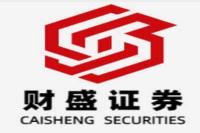Navigating the Labyrinth: A Look at the Financial Support for Tianjin's High-Quality Development
Meta Description: This article delves into the recent joint announcement by China's central banking authorities and Tianjin's government concerning financial support for the city's high-quality development, focusing on the crucial issue of managing state-owned enterprise and financing platform debt risks.
Introduction:
The economic landscape of China is ever-evolving, and the recent joint announcement by the People's Bank of China, the Financial Regulatory Administration, the China Securities Regulatory Commission, the State Administration of Foreign Exchange, and the Tianjin Municipal People's Government on "Financial Support for Tianjin's High-Quality Development" signals a significant move towards strengthening the city's economic standing. This comprehensive plan, outlined in a detailed document, offers a roadmap for financial support, with a particular emphasis on addressing the critical challenge of managing debt risks associated with state-owned enterprises (SOEs) and financing platforms. This article aims to provide a comprehensive analysis of this announcement, examining its implications for Tianjin's economic future and exploring the key strategies implemented to mitigate debt risks and foster sustainable growth.
Understanding the Context: Tianjin's Ambitions and the Debt Challenge
Tianjin, known as the "eye of the Bohai Sea," has long been a major economic hub in China. It boasts a mature industrial base, a thriving port, and a strong position in sectors like manufacturing, logistics, and finance. However, like many Chinese cities, Tianjin has faced challenges related to high debt levels, particularly within the state-owned enterprise sector. This debt burden, largely inherited from past development models, has become a significant obstacle in pursuing sustainable, high-quality growth.
The "Financial Support for Tianjin's High-Quality Development" document recognizes this intricately woven tapestry of economic strengths and challenges. It acknowledges that while Tianjin has a solid foundation, it needs to shift its focus from rapid growth to a more balanced, sustainable development path. This shift requires a careful approach to managing debt risks, ensuring financial stability, and fostering innovation.
Key Pillars of Support: A Multifaceted Approach
The document outlines a multi-faceted approach to supporting Tianjin's high-quality development, with key pillars encompassing:
1. Managing Debt Risks: A Calculated Approach
The document emphasizes the importance of a proactive, market-driven approach to addressing debt risks. This involves:
- De-risking SOE Debt: A key focus is on addressing the debt overhang within SOEs. The plan outlines a strategy for gradually reducing debt levels through a combination of restructuring, refinancing, and asset disposal. This process is designed to be market-driven, minimizing the potential for moral hazard and ensuring transparency.
- Strengthening Risk Monitoring: The document calls for the establishment of robust risk monitoring and early warning systems to identify potential debt-related challenges in SOEs and financing platforms. This proactive approach aims to prevent the escalation of risks and enable timely interventions.
- Promoting Sound Financing: The document emphasizes the importance of promoting sound financing practices within the SOE sector. This includes stricter scrutiny of new debt issuance, encouraging the adoption of more sustainable financing models, and promoting a shift towards equity financing.
2. Fostering Innovation and High-Quality Growth:
Beyond debt management, the document prioritizes supporting innovative industries and high-quality growth.
- Promoting Strategic Industries: The plan identifies key sectors for future growth, including advanced manufacturing, technology, and services. It aims to attract investment and talent to these sectors, fostering innovation and competitiveness.
- Supporting Small and Medium-Sized Enterprises (SMEs): The document recognizes the vital role of SMEs in driving economic growth and innovation. It outlines measures to improve access to financing, reduce regulatory burdens, and provide support for SME development.
- Enhancing Infrastructure: The plan includes support for developing critical infrastructure, including transportation, logistics, and digital networks. This investment aims to improve connectivity, enhance operational efficiency, and create a more conducive environment for business.
3. Strengthening Financial Markets:
The document underscores the importance of a robust and well-functioning financial market to support Tianjin's development goals.
- Developing Capital Markets: The plan encourages the development of capital markets, including bond markets, to provide alternative financing avenues for businesses and to attract long-term investment.
- Improving Financial Infrastructure: The document emphasizes the need to enhance financial infrastructure, including payment systems, data platforms, and regulatory frameworks, to promote efficiency and transparency.
- Strengthening Financial Supervision: The plan stresses the importance of effective financial supervision to safeguard financial stability and protect investors.
Navigating the Intertwined Threads of Debt and Development
The document's focus on managing debt risks is not simply a financial exercise; it is a critical step in enabling Tianjin to achieve its long-term development goals. The intertwined relationship between debt, investment, and growth is central to the plan's success.
The document's approach reflects a shift in thinking. It moves away from solely focusing on rapid growth at any cost and emphasizes sustainable, high-quality development. This shift requires a careful balance between investing for future growth and managing existing debt liabilities.
The Road Ahead: Challenges and Opportunities
The success of this plan will depend on several key factors:
- Effective Implementation: The document's success will hinge on the effective implementation of the outlined measures. This requires clear communication, strong coordination between the relevant government agencies, and timely decision-making.
- Market Confidence: Restoring investor confidence in SOEs and financing platforms is crucial. This requires a transparent and credible process for debt restructuring and risk management.
- Innovation and Competitiveness: Tianjin needs to foster innovation and competitiveness in key sectors to drive future growth. This requires attracting talent, supporting research and development, and creating a business-friendly environment.
The Future of Tianjin: A Bold Vision for a Sustainable Future
The "Financial Support for Tianjin's High-Quality Development" document represents a bold vision for the city's future. It aims to navigate the complex challenges of debt management, promote sustainable growth, and unlock the city's full potential. The document's success will depend on a concerted effort by government agencies, businesses, and individuals to work together towards a shared goal of creating a thriving and resilient economy.
Keyword: State-owned enterprise debt
State-owned Enterprise Debt: A Complex Landscape
The issue of SOE debt is a complex one, with historical roots and intricate interconnections within the broader Chinese economy. It is essential to understand the key factors that have contributed to this challenge:
- Historical Growth Model: China's rapid economic growth over the past few decades has been driven by significant investment in infrastructure and industrial expansion, often financed by SOEs. This model, though successful in generating growth, has also led to high debt levels within the SOE sector.
- Financial Support for Local Governments: SOEs have often been used as vehicles for local governments to finance infrastructure projects and other development initiatives. This practice has, in some instances, contributed to the accumulation of debt.
- Market Distortions: In some cases, SOEs have enjoyed implicit government guarantees, leading to risk-taking behavior and potentially unsustainable debt accumulation.
The document's focus on managing SOE debt reflects a recognition that these historical factors have created a complex situation. The plan aims to address this challenge by:
- Shifting from Quantity to Quality: The document emphasizes a shift from focusing on simply boosting GDP growth to achieving high-quality development, which involves prioritizing innovation, technological advancement, and sustainable practices.
- Promoting Market Discipline: The plan aims to introduce greater market discipline within the SOE sector. This involves reducing implicit guarantees, encouraging more transparent financial reporting, and promoting accountability.
- Restructuring and Refinancing: The document outlines a process for restructuring and refinancing SOE debt, aiming to reduce overall debt levels and ensure financial sustainability.
FAQs
1. What are the key objectives of the "Financial Support for Tianjin's High-Quality Development" document?
The document aims to support Tianjin's high-quality development by promoting sustainable growth, managing debt risks, strengthening financial markets, and fostering innovation.
2. How does the document address the issue of SOE debt?
The document emphasizes a market-driven approach to manage SOE debt, including restructuring, refinancing, and strengthening risk monitoring mechanisms.
3. What are the potential challenges to implementing the document's plans?
Challenges include ensuring effective implementation, restoring investor confidence, fostering innovation and competitiveness, and maintaining financial stability.
4. What are the key sectors identified for future growth in Tianjin?
The document identifies advanced manufacturing, technology, and services as key sectors for future growth.
5. How does the document support SMEs in Tianjin?
The document outlines measures to improve access to financing, reduce regulatory burdens, and provide support for SME development.
6. What are the implications of the document for Tianjin's long-term economic development?
The document represents a shift towards a more sustainable and balanced development model, with a focus on innovation, efficiency, and financial stability.
Conclusion:
The "Financial Support for Tianjin's High-Quality Development" document marks a pivotal moment in the city's economic journey. It acknowledges the challenges of debt management while emphasizing the importance of sustainable growth and innovation. The plan's success hinges on effective implementation, a collaborative effort from all stakeholders, and a commitment to transparent and accountable practices. By navigating the complex interplay between debt, investment, and growth, Tianjin has the potential to emerge as a model for sustainable development in China and beyond.



